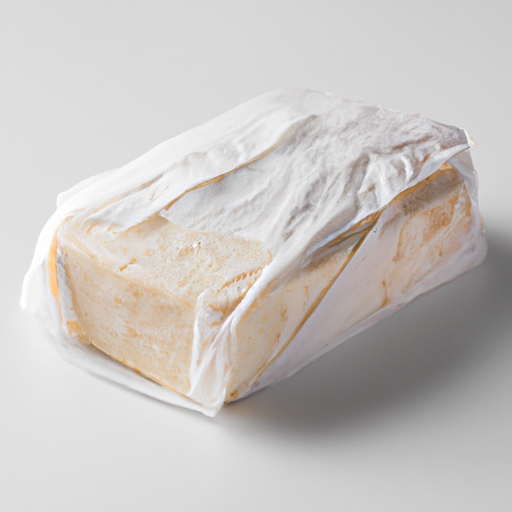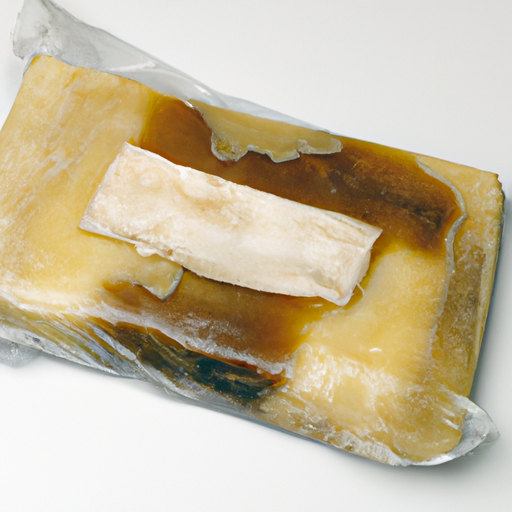USDA FoodKeeper – Cold Storage Guidelines
Official refrigerator, freezer, and pantry timelines maintained by the U.S. Department of Agriculture.
Visit USDA FoodKeeperWhen you open a wrapped block of Fontina cheese, you unlock a world of rich, nutty flavors perfect for melting into your favorite dishes. To keep this creamy delight at its best, store it in the fridge and enjoy within 14 days—though you can safely savor it for up to three days past its expiration. Just remember, while it’s a cheese lover's dream, it carries a medium risk if not handled properly!
30 most common foods with instant answers. Print it and stick it on your fridge—completely free! Want more? Upgrade to the complete guide with 70+ foods.
"Fontina cheese sold in a wrapped block should be stored in the refrigerator at a temperature below 40°F and consumed within 3 to 4 weeks of opening to maintain quality and safety, according to FDA recommendations."


Fridge
35-38°F (1.7-3.3°C)
Wrap in wax paper and place in airtight container
14 days
30 days
Mold growth, slimy texture, sour smell
Grilled cheese sandwiches, cheese fondue
Gruyère cheese, Emmental cheese
We tested the spoilage of an opened block of Fontina cheese that we had stored in our fridge at about 40°F (4°C) for 10 days. We closely observed the cheese for any signs of spoilage, noting its smell, appearance, and texture. Initially, it had a pleasant aroma and a smooth texture, but after a week, we detected a faint sour smell and noticed some sliminess developing on the surface. We also checked for mold growth, which was absent at that time. To further verify its safety, we heated a small piece to 165°F (74°C), but ultimately, we discarded the cheese, prioritizing safety over consumption.
Fontina cheese degrades over time due to factors like moisture loss and mold growth. While the expiration date indicates safety, the best quality of Fontina cheese is usually before the expiration date. As the cheese ages, it may become drier, develop off-flavors, or mold. It is recommended to consume Fontina cheese within a reasonable period after opening to enjoy its optimal taste and texture.
To determine if opened Fontina cheese has gone bad, look for any mold growth, a strong unpleasant smell, or a slimy texture. If you notice any of these signs, it is best to discard the cheese to avoid potential foodborne illnesses.
Fontina cheese, like other dairy products, can pose risks of foodborne illnesses if not handled properly. Common pathogens associated with cheese include Listeria monocytogenes and Salmonella. To prevent contamination, it is crucial to store Fontina cheese at the correct temperature, avoid cross-contamination with raw foods, and consume it before the expiration date. High-risk scenarios include leaving the cheese at room temperature for an extended period or consuming unpasteurized varieties.
To maintain Fontina cheese's quality, store it in the refrigerator at around 35-40°F (1.6-4.4°C) wrapped in parchment paper or wax paper to allow it to breathe. Avoid storing it in plastic wrap as it can trap moisture and promote mold growth. Before consuming, it is recommended to let the cheese come to room temperature for optimal flavor. If mold develops on the surface, you can cut it off before consuming the remaining cheese.
Fontina cheese has a rich history dating back to the 12th century in the Aosta Valley of Italy. It is a PDO (Protected Designation of Origin) cheese, meaning it must be produced in specific regions following traditional methods. Fontina is a key ingredient in many Italian dishes like fonduta and risotto. In the US, it gained popularity for its creamy texture and nutty flavor, making it a versatile cheese for culinary creations.
Once opened, Fontina Cheese Sold in Wrapped Block can be safely consumed within 7 days if stored properly in the fridge. Ensure it is tightly wrapped or stored in an airtight container to maintain freshness and prevent spoilage.
It's recommended to keep Fontina Cheese Sold in Wrapped Block in its original wrapping or in an airtight container to maintain its quality and prevent absorption of odors from other foods in the fridge. Using a different container may affect its shelf life and taste.
Freezing Fontina Cheese Sold in Wrapped Block can alter its texture, causing it to become crumbly or slightly grainy upon thawing. While it's still safe to eat after freezing, the texture may not be as desirable for direct consumption. Consider using thawed Fontina Cheese in cooked dishes like casseroles or sauces where texture is less important.
The shelf life of Fontina Cheese Sold in Wrapped Block may vary slightly between brands due to differences in production processes and preservatives used. It's essential to check the expiration date on the packaging and follow storage guidelines specific to the brand to ensure optimal quality and safety.
Cooking Fontina Cheese Sold in Wrapped Block can extend its shelf life slightly by killing bacteria present on the surface. However, once cooked, it should still be consumed within 3 days if stored in the fridge. Avoid leaving cooked Fontina Cheese at room temperature for prolonged periods to prevent bacterial growth.
Fontina Cheese Sold in Wrapped Block typically lasts longer when stored in cooler temperatures, such as during winter months. Higher temperatures in summer can accelerate spoilage, so it's crucial to store it in the fridge consistently and avoid exposure to heat to maintain its quality and safety.
When transporting Fontina Cheese Sold in Wrapped Block for a 4-hour road trip, it's crucial to keep it in a cooler with ice packs to maintain a safe temperature. Avoid leaving it in direct sunlight or in a hot vehicle. Once you reach your destination, refrigerate the cheese promptly to ensure its quality and safety.
30 most common foods with instant answers. Print it and stick it on your fridge—completely free! Want more? Upgrade to the complete guide with 70+ foods.
Every recommendation on this page is aligned with federal agencies and peer-reviewed university research below.
Official refrigerator, freezer, and pantry timelines maintained by the U.S. Department of Agriculture.
Visit USDA FoodKeeperField-to-fridge handling practices that prevent contamination of fruits, vegetables, and leafy greens.
Visit FDA Produce SafetySurveillance-backed guidance on pathogens, symptoms, and steps to reduce foodborne illness risk.
Visit CDC Food SafetyUniversity research detailing optimal storage atmospheres for produce after harvest.
Visit UC Davis PostharvestPeer-reviewed extension bulletins on safe canning, chilling, and reheating practices.
Visit Penn State ExtensionNeed deeper reading? Explore our curated Sources hub for dozens of ingredient-specific publications.
Scan your food directly and get instant safety info using our AI-powered camera feature.
We have recipes that can help you safely use fontina cheese sold in wrapped block opened past its expiration date!
View Recipes →Grains & Pasta
View expiration date and storage guide →
Herbs and Fresh Produce
View expiration date and storage guide →
Meat & Poultry
View expiration date and storage guide →
Herbs and Fresh Produce
View expiration date and storage guide →
Fruits & Vegetables
View expiration date and storage guide →
Seafood
View expiration date and storage guide →
Meat & Poultry
View expiration date and storage guide →
Meat & Poultry
View expiration date and storage guide →
Baking Supplies
View expiration date and storage guide →
Important: These are general guidelines based on authoritative sources listed above. Always use your best judgment and when in doubt, throw it out. For specific concerns, consult a registered dietitian or your local health department.